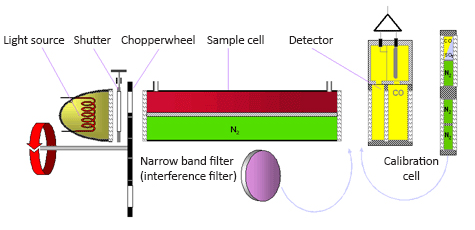Home
- Gas Analysis & Reporting
- Dust monitors
- Flow monitors
- Gas analysers
- Oxygen monitors
Condensate pumps- Coolers
- Filters
- Fittings
- Heated hoses
- Hoses
- Probes
- Sample gas pumps
- Test gasses
- Valves
Reconditioned products- Spare parts
- For analysers
- For gas conditioning
- Batteries
- Circuit boards
- Condensate pumps - spare parts
- Coolers - spare parts
- Filters - spare parts
- Fittings - spare parts
- Fuses
- Gaskets
- Heated hoses - spare parts
- Hoses - spare parts
- O-rings
- Other electrical
- Other mechanical
- PLCs
- Power supplies
- Probes - spare parts
- Relays
- Sample gas pumps - spare parts
- Sensors
- Test gasses - spare parts
- Tools
- Valves - spare parts
- Info pages

 Many gasses absorb infrared light extremely well, which makes the use of infrared light (IR) very useful for the analysis of many gasses such as CO, CO2, NO, SO2 and CH4.
Many gasses absorb infrared light extremely well, which makes the use of infrared light (IR) very useful for the analysis of many gasses such as CO, CO2, NO, SO2 and CH4.